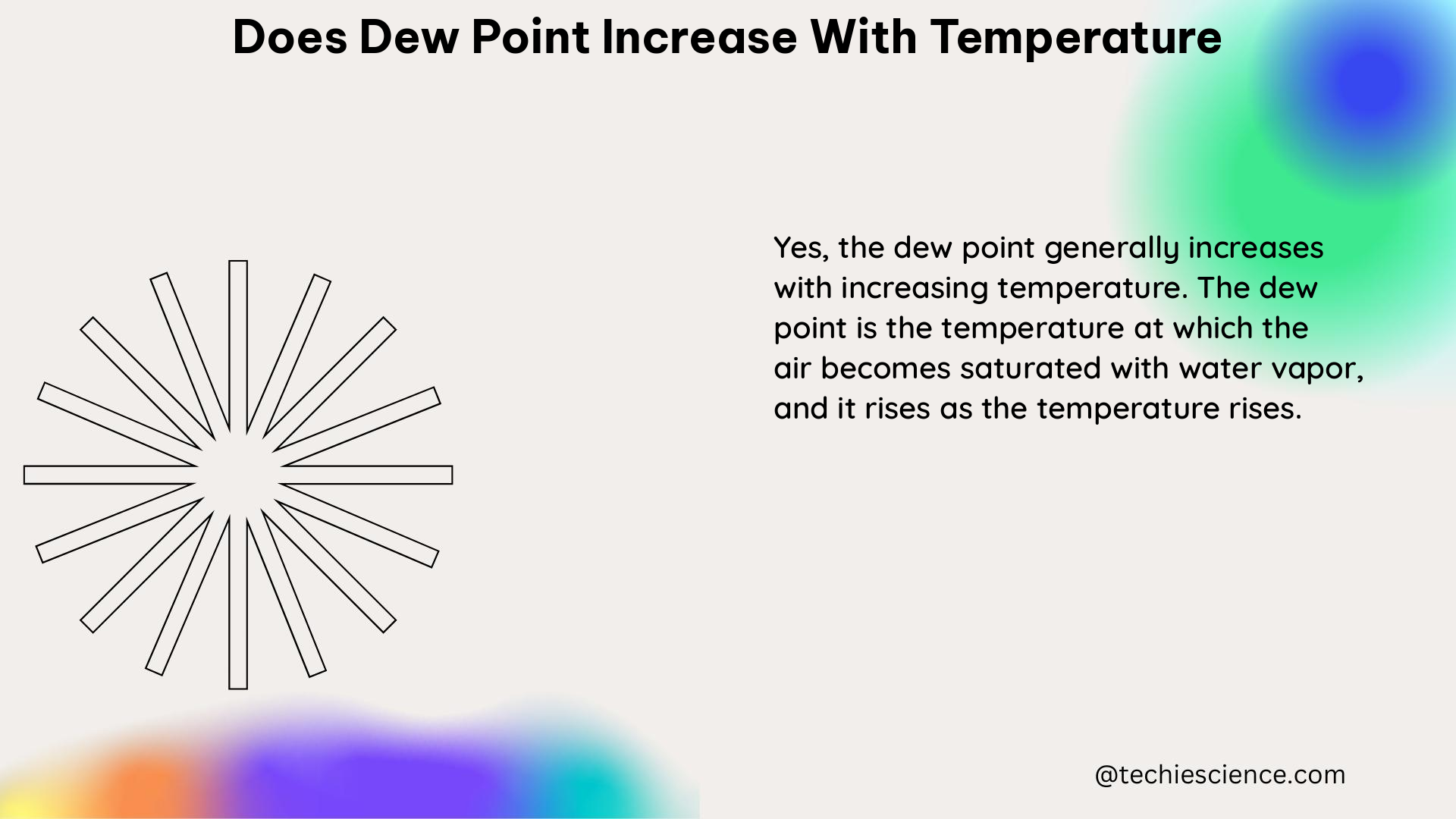The dew point temperature is a crucial parameter in understanding the relationship between air temperature and moisture content. Contrary to popular belief, the dew point temperature is not directly dependent on the air temperature. Instead, it is influenced by a complex interplay of factors, including atmospheric pressure, humidity, and the presence of condensation nuclei.
Understanding Dew Point Temperature
Dew point temperature is the temperature at which the air becomes saturated with water vapor, and any further cooling will result in the formation of dew or other forms of condensation. It is a direct measure of the amount of moisture present in the air, and is often used in various applications where the presence of moisture can cause problems, such as in industrial processes or the storage of perishable goods.
Factors Affecting Dew Point Temperature

The dew point temperature is influenced by several factors, including:
-
Atmospheric Pressure: The dew point temperature is inversely related to atmospheric pressure. Higher pressure results in a lower dew point temperature, while lower pressure leads to a higher dew point temperature.
-
Humidity: The amount of water vapor present in the air directly affects the dew point temperature. Higher humidity levels correspond to a higher dew point temperature, and vice versa.
-
Condensation Nuclei: The presence of tiny particles, such as dust or smoke, in the air can act as condensation nuclei, facilitating the formation of dew or other forms of condensation at a higher temperature than would otherwise be possible.
Relationship between Temperature and Dew Point
The relationship between air temperature and dew point temperature is complex and can be influenced by various factors. In general, as the air temperature increases, the amount of moisture the air can hold also increases. However, this does not necessarily mean that the dew point temperature will also increase.
In fact, in some cases, the dew point temperature may actually decrease as the temperature increases, particularly if the atmospheric pressure is also increasing. This is because the increase in temperature can lead to a decrease in the relative humidity, which can offset the increase in the absolute amount of moisture the air can hold.
Measuring Dew Point Temperature
There are several methods used to measure the dew point temperature, including:
-
Psychrometers: These instruments use the difference in temperature between a dry-bulb thermometer and a wet-bulb thermometer to calculate the dew point temperature.
-
Dew Point Hygrometers: These devices directly measure the dew point temperature by cooling a surface until condensation forms, and then measuring the temperature of the surface at the point of condensation.
-
Chilled Mirror Hygrometers: These instruments work by cooling a mirror until condensation forms on the surface, and then measuring the temperature of the mirror at the point of condensation.
Practical Applications of Dew Point Temperature
The dew point temperature is an important parameter in various applications, including:
-
Industrial Processes: In industries where the presence of moisture can cause problems, such as in the production of electronics or the storage of sensitive materials, the dew point temperature is closely monitored to ensure optimal conditions.
-
HVAC Systems: The dew point temperature is used in the design and operation of heating, ventilation, and air conditioning (HVAC) systems to prevent the formation of condensation and ensure comfortable indoor environments.
-
Weather Forecasting: Dew point temperature is a key factor in weather forecasting, as it helps predict the likelihood of precipitation, fog, and other weather phenomena.
-
Agriculture: Farmers and horticulturists use dew point temperature to assess the risk of plant diseases and optimize irrigation and pest control strategies.
Numerical Examples and Calculations
To illustrate the relationship between temperature and dew point, let’s consider a few numerical examples:
-
Example 1: Suppose the air temperature is 25°C (77°F) and the relative humidity is 60%. Using the Clausius-Clapeyron equation, the dew point temperature can be calculated as approximately 17°C (63°F).
-
Example 2: If the air temperature increases to 30°C (86°F) while the relative humidity remains at 60%, the dew point temperature would decrease to approximately 16°C (61°F). This is because the increase in temperature leads to a decrease in relative humidity, which offsets the increase in the absolute amount of moisture the air can hold.
-
Example 3: Suppose the air temperature is 20°C (68°F) and the atmospheric pressure is 1 atm. If the pressure increases to 1.1 atm, the dew point temperature would decrease from approximately 14°C (57°F) to 12°C (54°F), demonstrating the inverse relationship between pressure and dew point temperature.
These examples illustrate the complex and non-linear relationship between air temperature and dew point temperature, and the importance of considering other factors, such as humidity and atmospheric pressure, when analyzing this relationship.
Conclusion
In summary, the dew point temperature is not directly dependent on the air temperature, but rather is influenced by a variety of factors, including atmospheric pressure, humidity, and the presence of condensation nuclei. While the air temperature can influence the amount of moisture the air can hold, the dew point temperature may not necessarily increase with increasing temperature, as other factors can play a significant role in determining its value. Understanding the relationship between temperature and dew point is crucial in various applications, from industrial processes to weather forecasting and agriculture.
References:
- Dew point temperature – What does it mean and how can it be calculated? (n.d.). Retrieved June 24, 2024, from https://www.vaisala.com/en/expert-article/dew-point-temperature-what-does-it-mean-and-how-can-it-be-calculated
- Understanding Dew Point Temperature – GreenBuildingAdvisor (n.d.). Retrieved June 24, 2024, from https://www.greenbuildingadvisor.com/article/understanding-dew-point-temperature
- The relationship of atmospheric air temperature and dew point temperature (n.d.). Retrieved June 24, 2024, from https://iopscience.iop.org/article/10.1088/1748-9326/ab2a26
- Dew Point Definition and How to Measure It for Industries (n.d.). Retrieved June 24, 2024, from https://www.processsensing.com/en-us/blog/dew-point-definition-and-how-to-measure-it-for-industries.htm
- What is humidity and the dew point? (n.d.). Retrieved June 24, 2024, from https://www.13newsnow.com/article/weather/what-is-the-dew-point/291-a5b83fad-6fdd-4481-88b8-a321cf548bca
Hello, I am Deeksha Dinesh, currently pursuing post-graduation in Physics with a specialization in the field of Astrophysics. I like to deliver concepts in a simpler way for the readers.